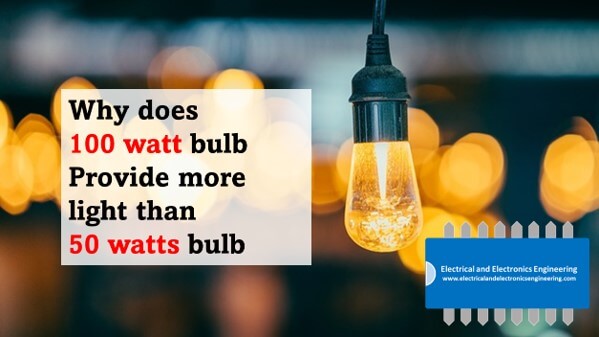A bulb’s brightness or amount of light is determined by its power consumption, typically measured in watts. A 100-watt bulb provides more light than a 50-watt bulb because it consumes more electrical power and generates more light energy.
When an electric current passes through the filament of a light bulb, it produces light and heat. The filament’s resistance causes it to heat up and emit visible light. A higher-wattage bulb has a filament with a lower resistance, allowing more electrical current to pass through. This increased current causes the filament to become hotter and emit more light.
In simpler terms, the 100-watt bulb has a larger filament or a more efficient design that converts more electrical energy into light energy. Therefore, it produces a higher light intensity than the 50-watt bulb.
However, it’s important to note that advancements in lighting technology, such as the development of energy-efficient bulbs like LEDs, have allowed for more light output while consuming less power. So, the wattage alone is not the sole determinant of brightness in modern lighting options.
